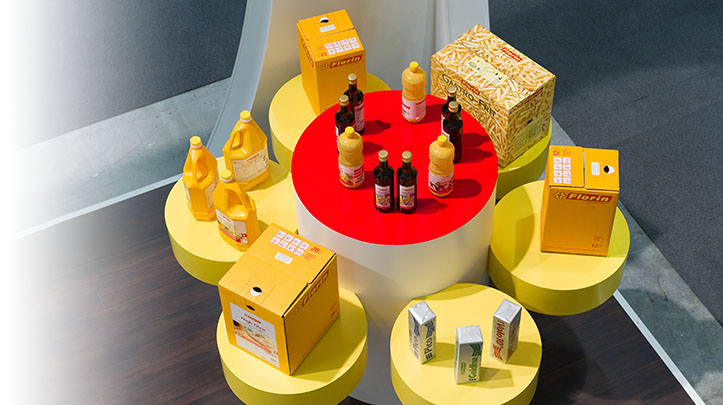There are certain influencing factors which – depending on their configuration and interaction – can lead to noticeable fluctuations in the sensitive price bracket for edible oils.
It requires continuous market observation, as well as experience of comparable circumstances, to correctly assess the situation. The actual pricing is never based on individual assumed factors, rather is much more a complex interplay of factors.
When making decisions, put your trust in advice from an expert - your Florin contact

More expensive transport costs, for instance due to fuel surcharges or levies on heavy goods vehicles, have a direct influence on raw materials. If it is necessary to move to more remote markets when buying seeds due to poor harvests, the longer transport route must be reflected in the budget.
Customs surcharges can be subject to changes and affect prices, depending on statutory framework conditions.
Effective production figures and shipping volumes to Europe can significantly affect the price, especially of palm oil, palm kernel oil and coconut oil.
Exchange rate fluctuations with the euro and US dollar influence raw material prices. The strength of this interdependence depends on the raw material as well as on additional influences.
Fresh goods arrive onto the market with a new harvest. Estimations of harvest volumes are correspondingly important in advance. Good harvest forecasts lead to stable and lower prices and vice versa.
If there is a substitute product for certain oils, the shortage of one product will increase demand for the other oil.
Examples of substitute products:
• Soya oil and sunflower oil
• Sunflower oil and rapeseed oil
• Palm oil and palm kernel oil
• etc.
Political developments within a country – from initial statements to specific policy changes, for instance in agricultural policy – are often difficult to estimate, but define the pricing situation in the long term.
Alongside poor forecasts, a decline in global market production, or a rise in demand, rumours can also push prices up.
In the same way, rumours can also influence the market in a positive way and result in lower prices. It is therefore essential to weigh up statements and information very well.
The quantity of effective seeds is the initial starting point when estimating the harvest volume.
The effects of speculative purchases or sales are totally unpredictable. They can even override the other factors, so that the market behaviour totally changes.
High stocks in the country of origin or in Rotterdam lead to stable or lower prices, while low stocks lead to a corresponding rise.
Naturally traditional market law also applies to edible oil. The higher the demand and the scarcer the supply, the higher the prices.
The greater the availability and thus also the supply, the lower the prices.
That is why realistic estimations always also relate to Europe-wide and worldwide demand trends.
Alternative uses, such as biodiesel, increase demand and thus also prices.
At certain times, like sowing time or just before harvest, dry periods, poor weather, hurricanes as well as ideal weather conditions can have a very short-term influence on markets. Finally, the harvest volumes, and thus the price development, depend on this. In these critical phases, we speak of "precarious weather markets".
